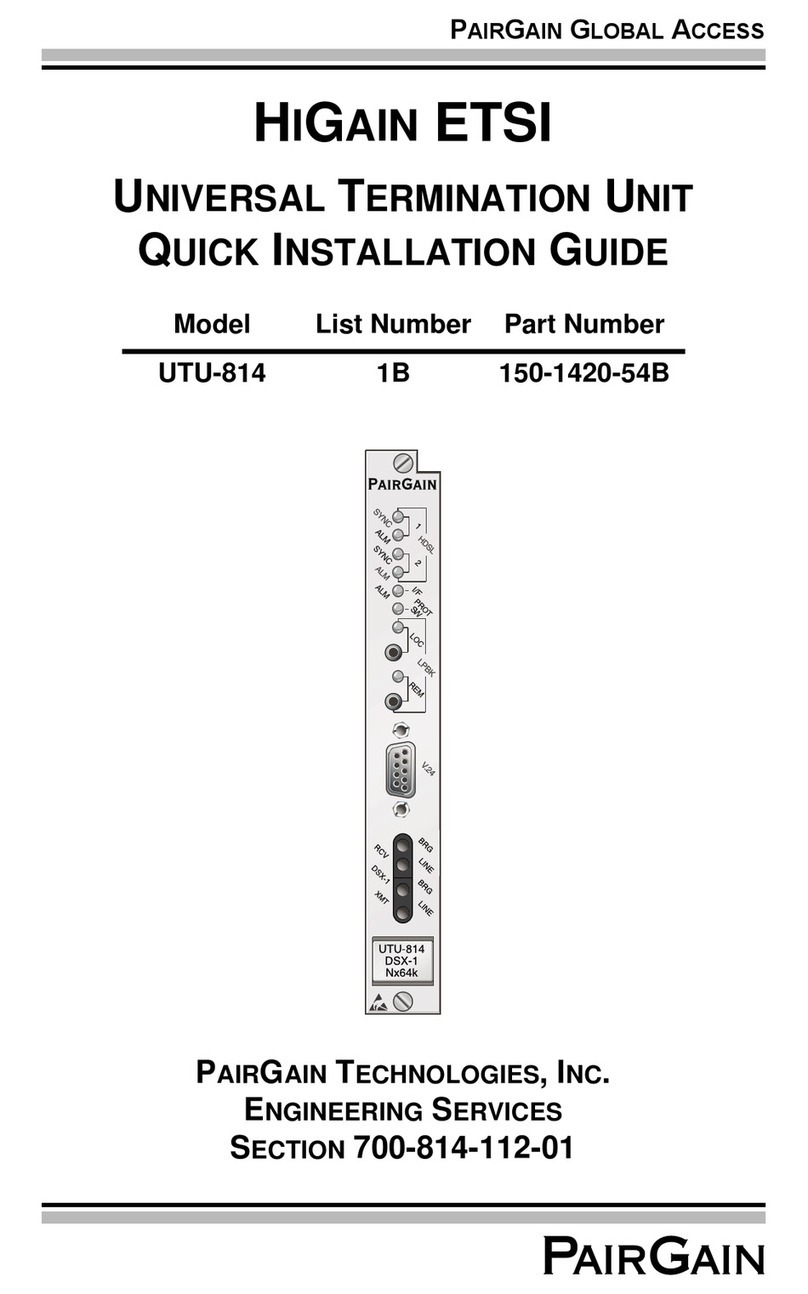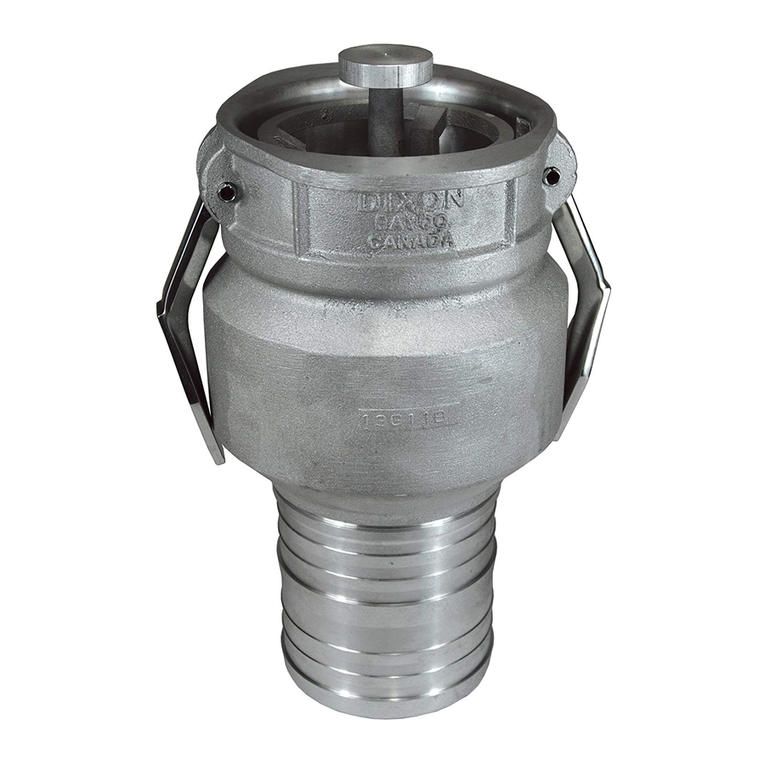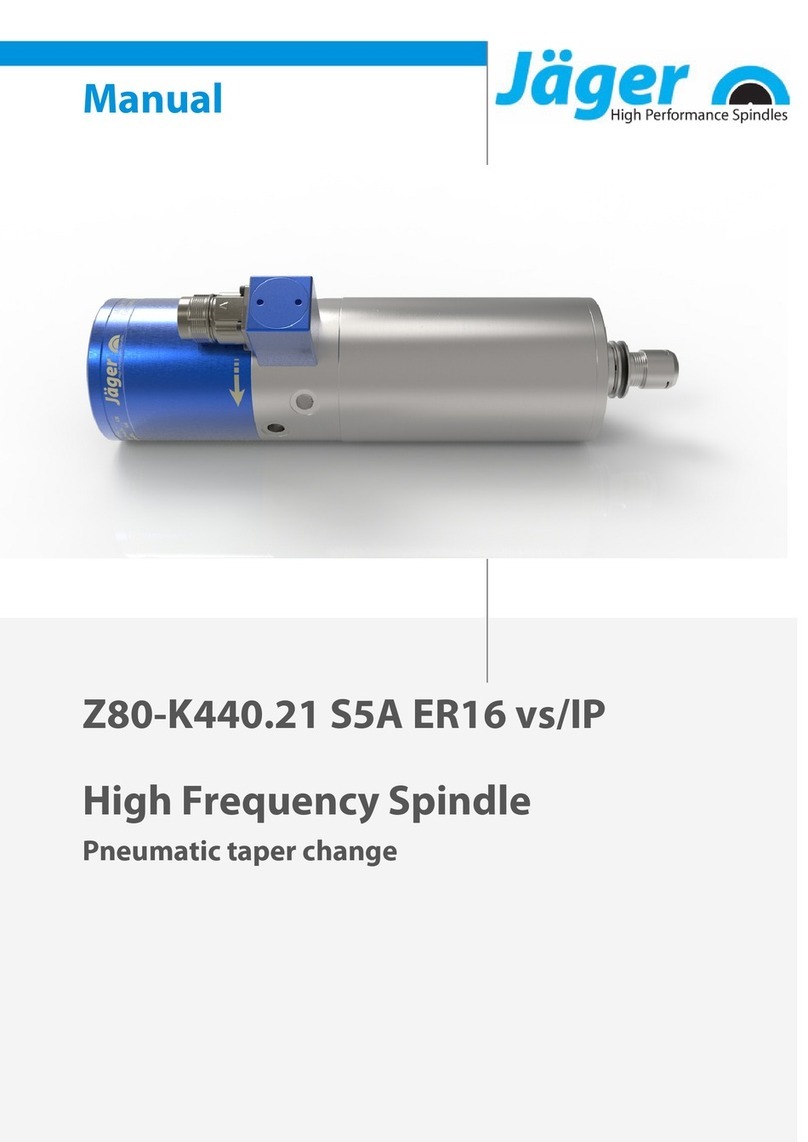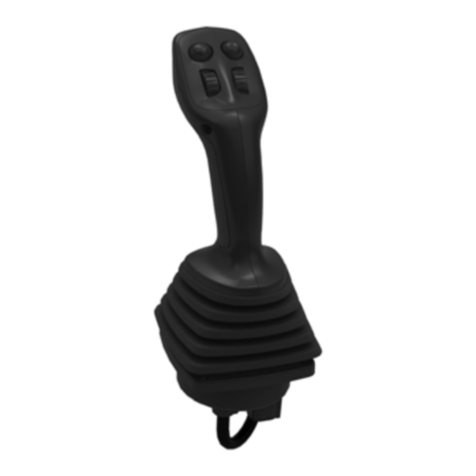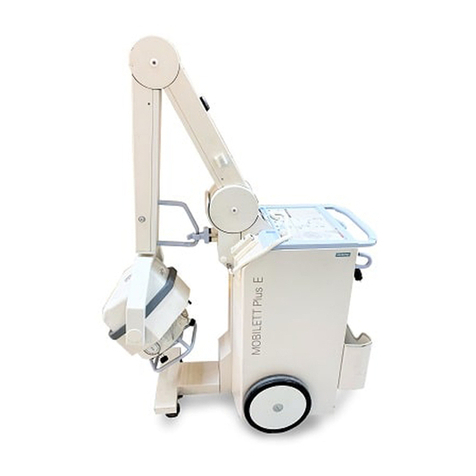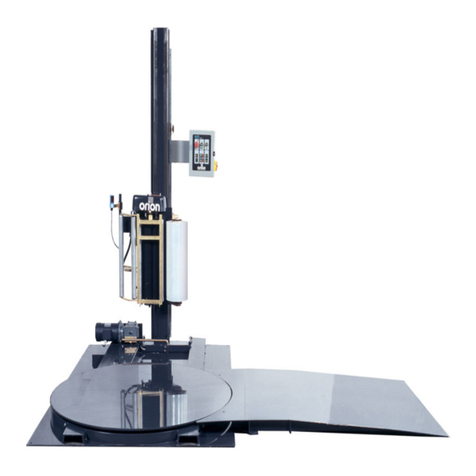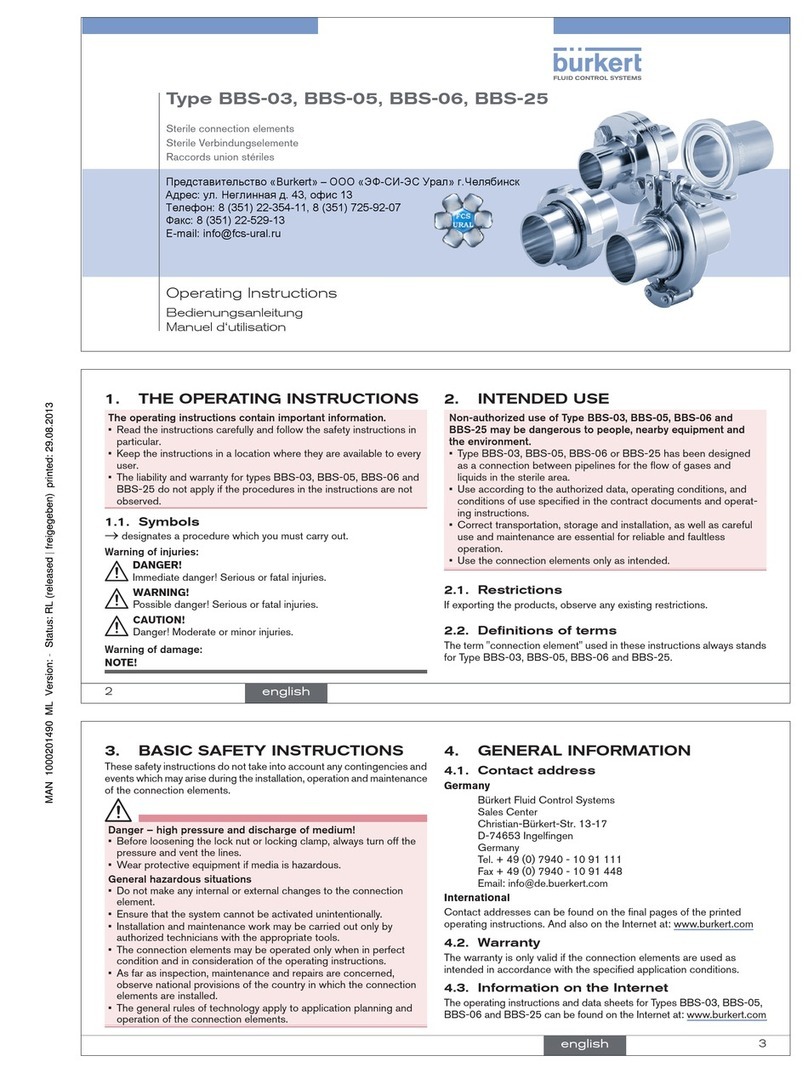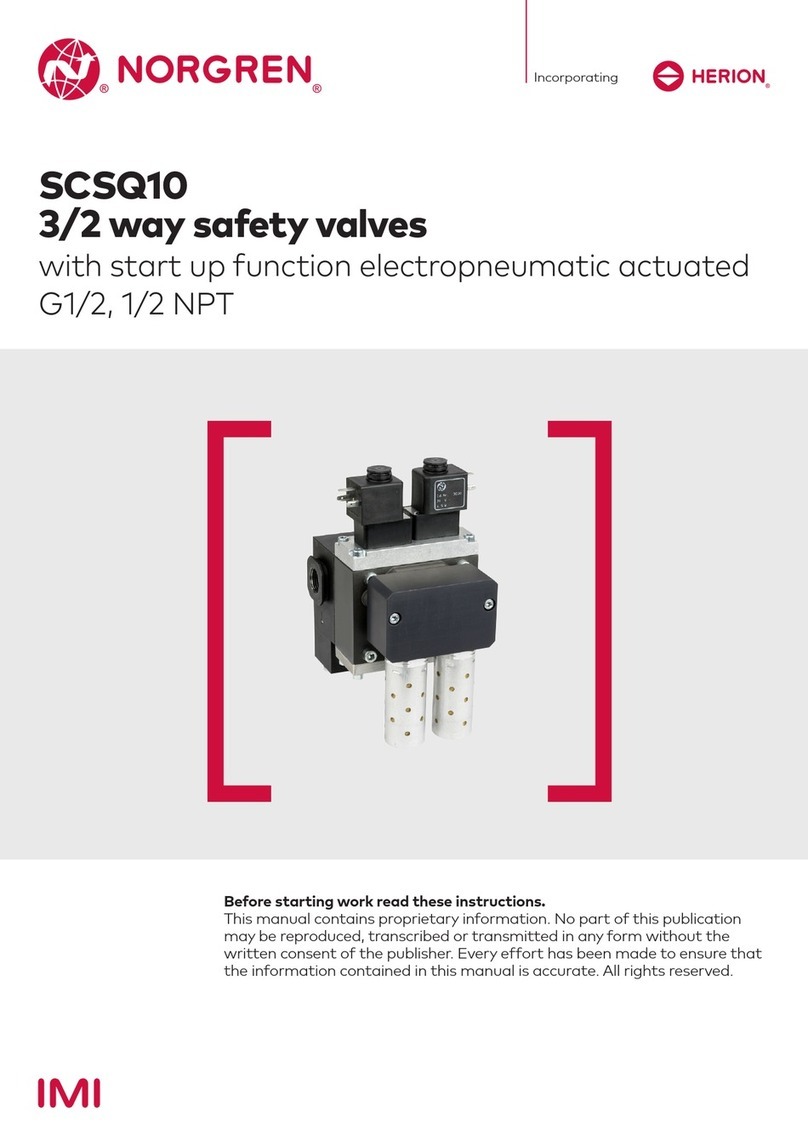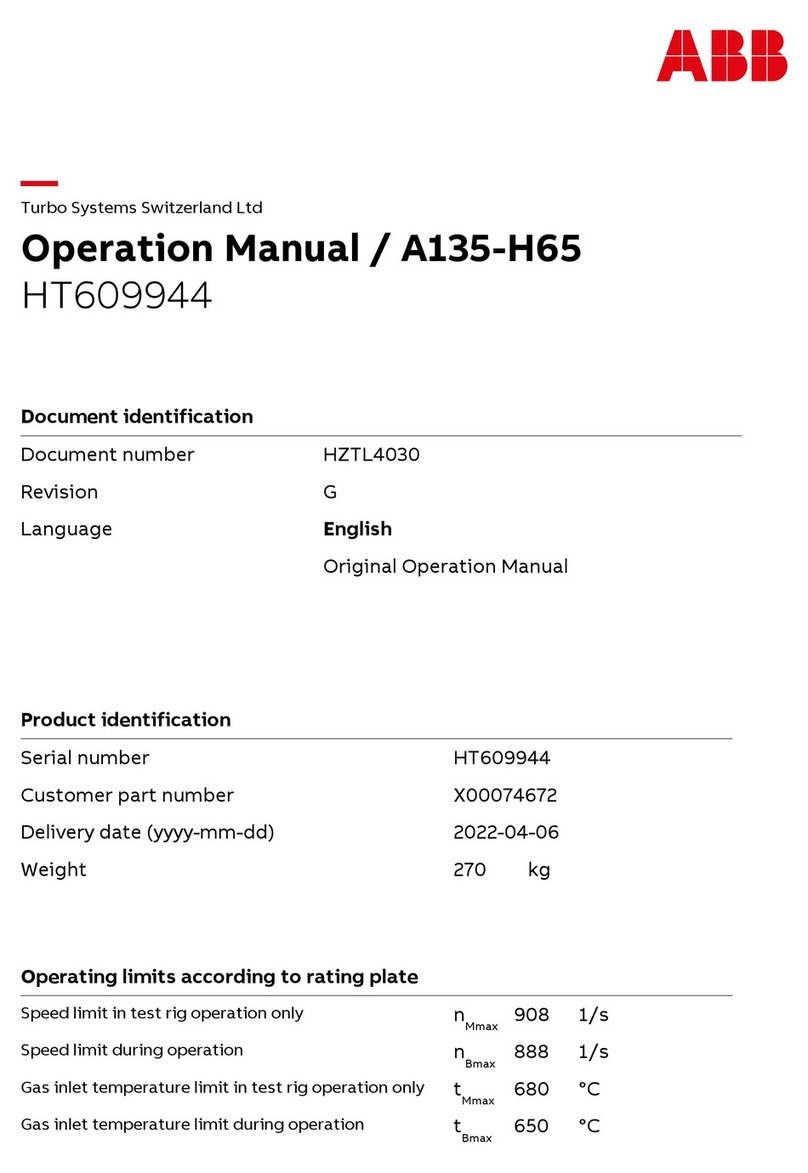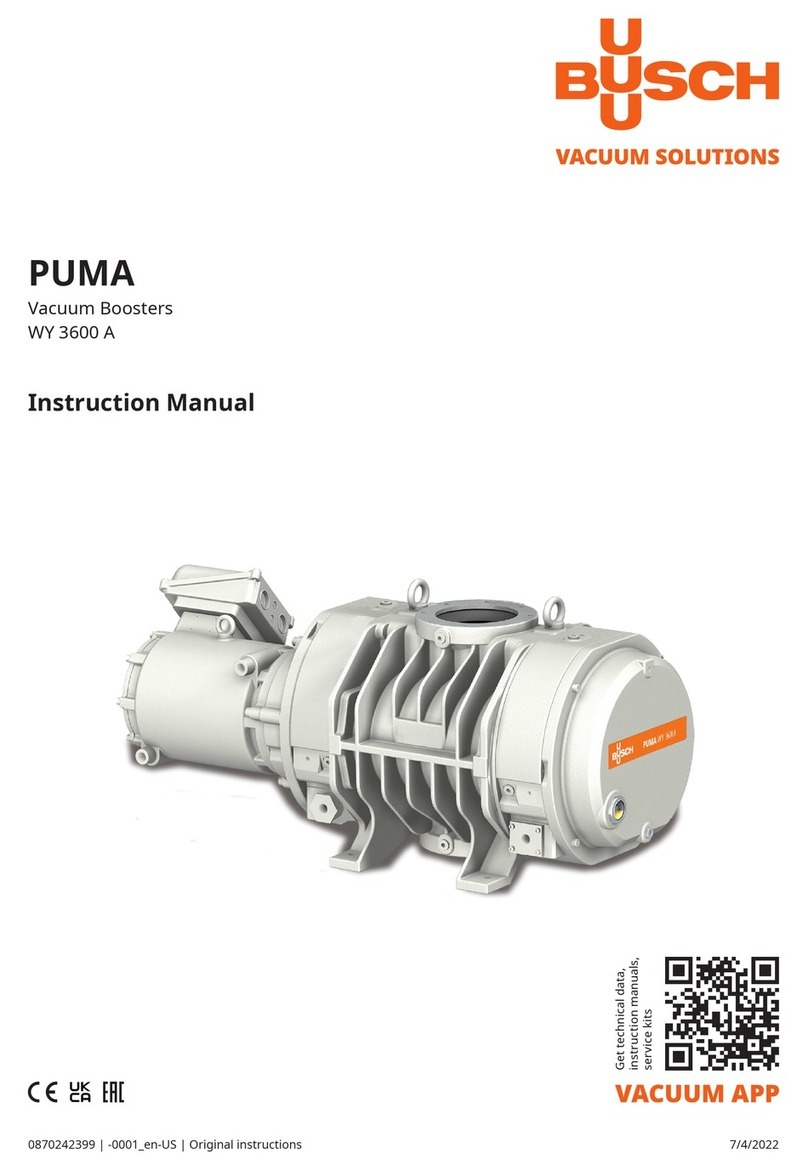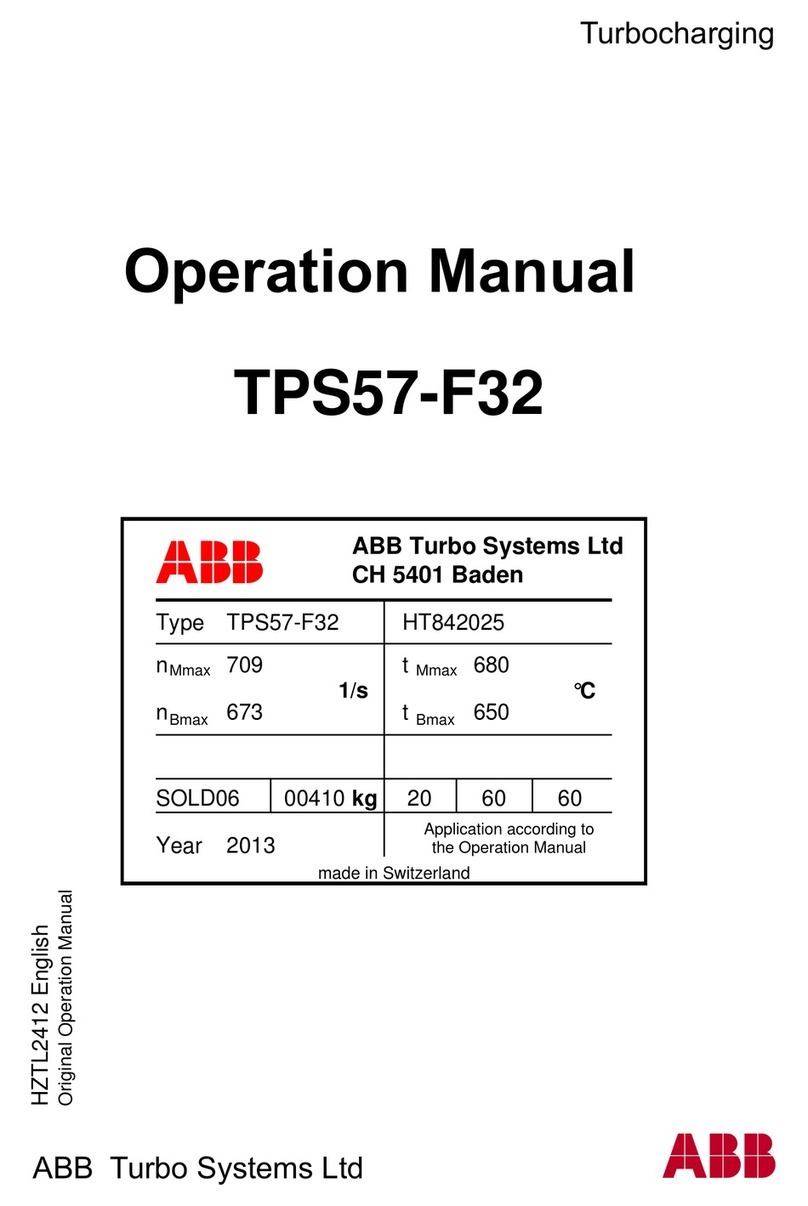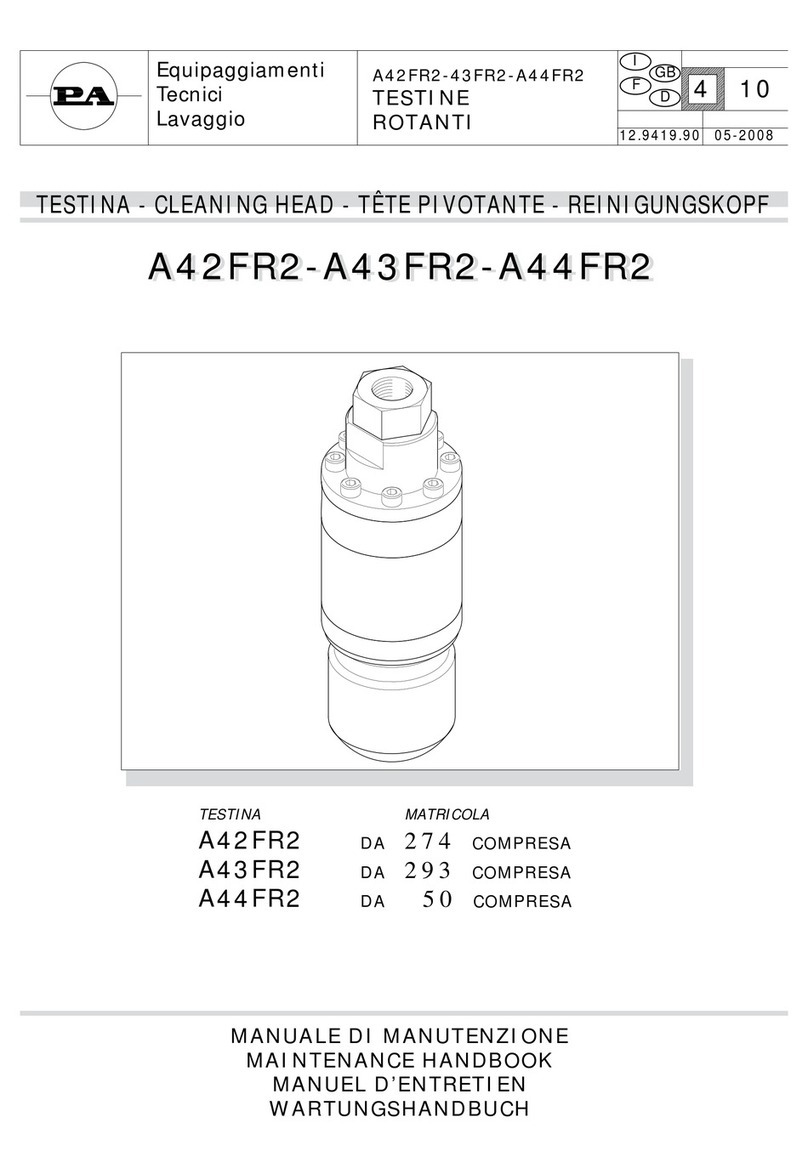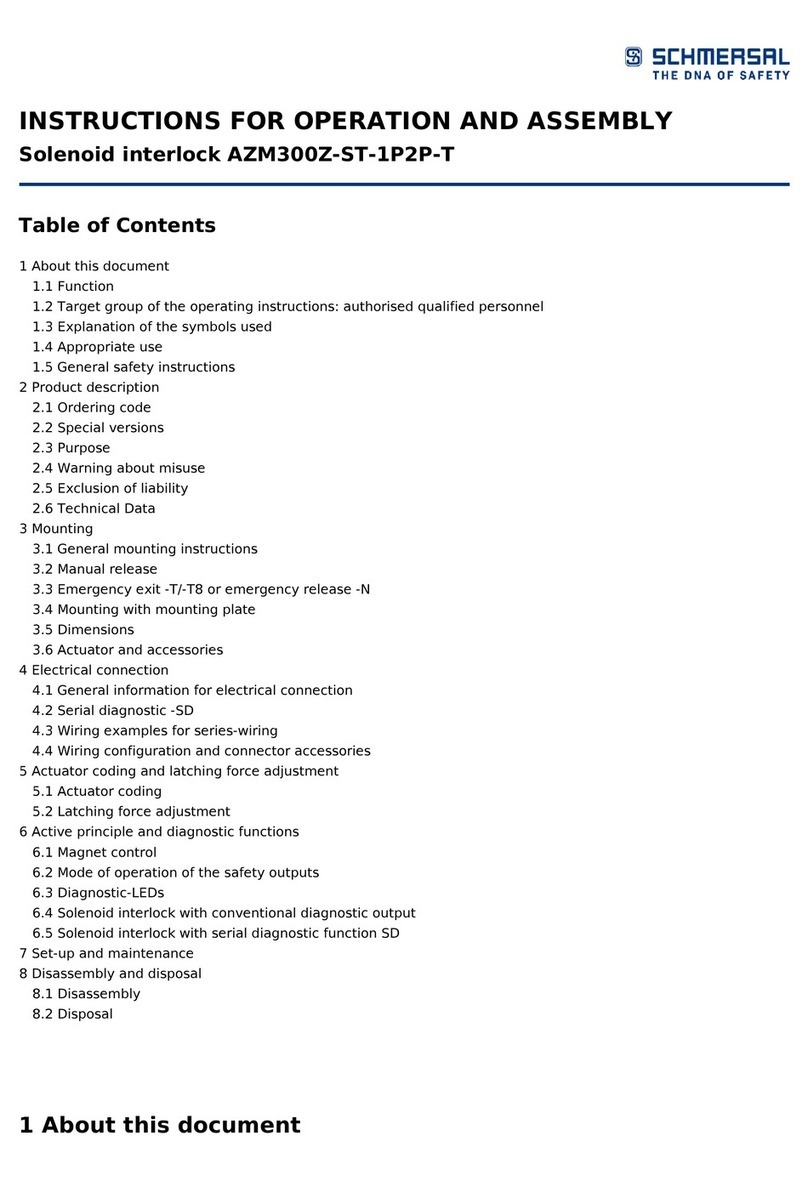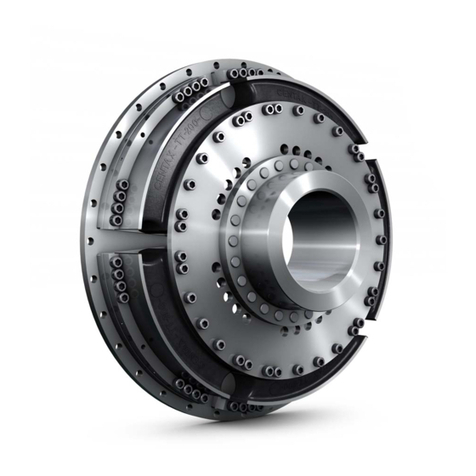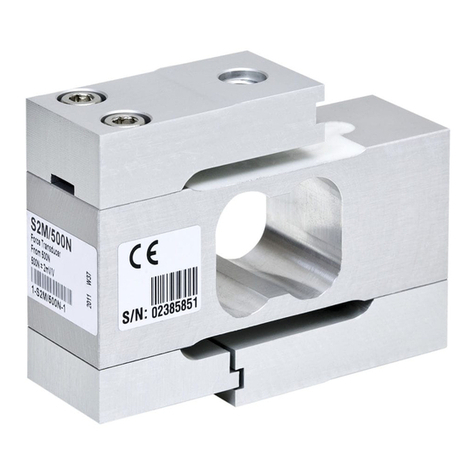Larson Electronics IND-CDL-SQ-10-FUVC-MP-1L-V1 User manual

IND-CDL-SQ-10-FUVC-MP-1L-V1
Larson Electronics, LLC Phone: (800) 369-6671 Fax: (903) 498-3364 www.larsonelectronics.com 1of 15
Far-UV Recessed 10" Square Light
(1) 10W Microplasma Board, 222 nm UVC Sanitation - Recessed Mount
Instruction Manual
Thank you for your purchase of the Larson Electronics IND-CDL-SQ-10-FUVC-MP-1L-V1.
EPA Reg. No 98409-1
EPA Est. No. 98409-TX-1
WARNING:
READ CAREFULLY BEFORE INSTALLING FIXTURE. RETAIN THESE INSTRUCTIONS FOR FUTURE REFERENCE.
CRITICAL SAFETY INSTRUCTIONS:
•INSTALLATION SHOULD ONLY BECONDUCTED BY A QUALIFIED ELECTRICIAN IN ACCORDANCE WITH NEC AND ANY
RELEVANT LOCAL BUILDING CODES.
•RISK OFFIRE OR ELECTRIC SHOCK. FIXTURE INSTALLATION REQUIRES KNOWLEDGE OF FIXTURE'S ELECTRICAL
SYSTEMS. IFNOTQUALIFIED, CONTACT A QUALIFIED ELECTRICIAN.
•BE CERTAIN ELECTRICAL POWER IS OFF BEFORE AND DURING INSTALLATION AND MAINTENANCE.
•MAKE SURE THE SUPPLY VOLTAGE IS THE SAME AS THE FIXTURE'S RATED VOLTAGE.
•TO PREVENT WIRING DAMAGE OR ABRASION, DO NOT EXPOSE WIRING TO EDGES OF SHEET METAL OR SHARP
OBJECTS. SUITABLE FOR DAMP LOCATIONS.
IMPORTANT
READ CAREFULLY BEFORE INSTALLING THIS FIXTURE. SAVE THESE INSTRUCTIONS FOR FUTURE
MUSTREFERENCE. THE IND-CDL-SQ-10-FUVC-MP-1L-V1 BE WIRED
IN ACCORDANCE WITH NATIONAL ELECTRICAL CODE AND ALL APPLICABLE LOCAL
CODES. PROPER GROUNDING IS REQUIRED FOR SAFETY.
WE STRONGLY ENCOURAGE ONLY ALICENSED ELECTRICIAN INSTALL, OPERATE AND MAINTAIN THIS
PRODUCT. IF YOU ARE NOT QUALIFIED OR UNFAMILIAR WITH ANY ASPECT OF THIS INSTRUCTION
SHEET, CONSULT AN ELECTRICIAN. THERE ARE NO SERVICEABLE PARTS INSIDE.
WARNING: MAKE SURE POWER IS TURNED OFF BEFORE STARTING THE
INSTALLATION OR PERFORMING ANY MAINTENANCE.
RISK OF FIRE/ELECTRIC SHOCK –DISCONNECT POWER AT BREAKER BEFORE INSTALLING OR SERVICING.
RISK OF PERSONAL INJURY –FIXTURE MAY BECOME UNSTABLE OR DAMAGED IF NOT INSTALLED PROPERLY.
RISK OF BURN –ALLOW FIXTURE TO COOL BEFORE SERVICING.
WARNING:
USER SHOULD BE TRAINED IN THE PROPER USE AND MAINTENANCE OF THIS DEVICE. THIS LINE
CORD IS INTENDED TO ALLOW OPERATORS TO EXTEND POWER TO EQUIPMENT WHEN STATIONARY OUTLETS ARE NOT
READILY AVAILABLE.
IMPROPER USE OF THIS CORD, PLUG, AND RECEPTACLE CAN LEAD TO SERIOUS INJURIES OR DEATH TO
PERSONNEL.
PERIODIC INSPECTION OF THE CORD IS NECESSARY.
THE CORD MUST BE ROUTINELY CHECKED FOR CUTS, BREAKS, OR ANY SEVERE ABRASIONS, AND IF ANY ARE FOUND,
THE CORD MUST BE REPLACED BEFORE RESUMING USE.
UV Warning
WARNING: ULTRAVIOLET LIGHT IS HARMFUL TOEYES AND SKIN. DO NOT STARE DIRECTLY INTO THE
ULTRAVIOLET BEAM WITHOUT WEARING PROTECTIVE GEAR TOPROTECT EYES FROM LONG TERM DAMAGE.
UNPLUG LAMP BEFORE SERVICING.
The Larson Electronics IND-CDL-SQ-10-FUVC-MP-1L-V1 Far-UV Recessed Square Light disinfects 99% of
viruses, bacteria, mold and spores from ceilings in occupied areas. This eye and skin safe disinfection unit uses
one 10-watt microplasma board that emits far-UV 222 nm germicidal light. Featuring an expected lifespan of 6,000+
hours, the unit is compatible with 120-277V AC, 50/60Hz.

IND-CDL-SQ-10-FUVC-MP-1L-V1
Larson Electronics, LLC Phone: (800) 369-6671 Fax: (903) 498-3364 www.larsonelectronics.com 2 of 15
Warning: Check product label for correct input voltage!
Attach supply line wires to the appropriate light fixture wires as shown in the
diagram
Secure each pair of wires according to the diagram. Utilize ajunction box or
similar device and take precautionary steps for weatherproofing all
connectionsif installed in a location where water may come in contact with the unit.
Ensure the unit is properly grounded and that wiring is done according to all local and
national electrical/building codes.
MOUNTING
Standard pigtail(flying leads) wiring
We strongly encourage a licensed electrician install this product,in all locations especially in outdoor areas
where weatherproofing may be required. Universal voltage driver permits operation at 120V - 277V AC, 50 or 60Hz.
WIRING
NOTE: User must cutout a 9.4" x 9.4" hole for the
fixture to be inserted into the ceiling. The remaining
parts of the fixture will cover the hole once mounted.
1. Carefully unpack and unwrap fixture.
2. Turn OFF power at switch and fusebox or circuit
breaker.
3. Remove existing trim installed in recessed
housing (if necessary).
4. Install medium base adapter into socket.
5. Connect the two terminals together.
6. Insert torsion springs into fixture housing
brackets.
7. When installing trim into recessed housing, the
torsion spring must be moved. Make sure
mounting bracket is installed with the label faced
downwards.
8. Gently push up trim and torsion springs so they
begin to expand and lift trim in place.
The far-UV sanitation light is compatible with recessed mounting on ceilings. This unit can be secured on existing 10" square lights. When
mounted at a height of 8-10 feet, the germicidal UV light covers up to 50-100 square feet of targeted surface. Residual sanitation occurs up
to 300 square feet.
WARNING:
This unit DOES NOT have a glass lens. Users should avoid touching the exposed board at all costs. Touching the board
can cause an electric shock. Fixture needs to be installed in a location where contact to the board cannot be made.
INSTALLATION
Figure:1
4x Retaining Spring Clips
FUVC Light Fixture
Ceilling
Figure:2

IND-CDL-SQ-10-FUVC-MP-1L-V1
Larson Electronics, LLC Phone: (800) 369-6671 Fax: (903) 498-3364 www.larsonelectronics.com 3 of 15
1. Perform visual,mechanical and electrical inspections on a regular basis.We recommend routine checks to be made on a yearly
basis. Frequency of use and environment shoulddetermine this. It is recommendedto follow an Electrical Preventive
Maintenance Program as described in NFPA 70B: Recommendedpractice for Electrical Equipment.
2. The lens should be cleaned periodically as neededto ensure continued photometric performance. Clean the lens with a damp,
non-abrasive,lint-free cloth. If not sufficient, use mild soapor a liquid cleaner.
3. Inspect the cooling fins on the luminaire to ensure that they are free of any obstructions or contamination (i.e.excessivedust
build-up). Clean with a non-abrasive clothif needed.
4. Do not operate if the lens is cracked or damaged. All fasteners shouldbe properly seated.
USE AND CARE
Unauthorized modification may impair the function and/or safety of this device and could affect the life of the equipment. Always
check for damaged or worn out parts before using the device. Store it in a secure place out of the reach of children when not in use.
Inspect for good working condition prior to storage and before re-use.
REPLACEMENT PARTS
The IND-CDL-SQ-10-FUVC-MP-1L-V1 is designed to provide years of reliable performance. Should the need for replacement parts
arise, please contact Larson Electronics.
THESE INSTRUCTIONS MAY NOT COVER ALL DETAILS OR VARIATIONS OF THIS PRODUCT FOR YOUR EQUIPMENT OR INSTALLATION REQUIREMENTS.
SHOULD FURTHER INFORMATION NOT COVERED BY THESE INSTRUCTIONS BE REQUIRED, PLEASE CONTACT LARSON ELECTRONICS BY EMAIL AT
SALES@LARSONELECTRONICS.COM OR BY PHONE AT 1-800-369-6671 FOR FURTHER ASSISTANCE.
PLEASE VISIT LARSONELECTRONICS.COM FOR WARRANTY AND RETURN INFORMATION.
MAINTENANCE
Caution: To avoid personal injury, disconnect power to the light and allow the unit to cool down before performing maintenance.
Warning: No user serviceable parts inside of fixture. Risk of electric shock. Removal of the lens will void the warranty.

222nm Far-UVC
Larson Electronics, LLC Phone: (800) 369-6671 Fax: (903) 498-3364 www.larsonelectronics.com
5 of 15
Ultraviolet Radiation Safety
WARNING: Do not attempt operation until you are familiar with all warnings,precautions,and procedures outlinedwithin
thisinstruction sheet.
OPERATION PRECAUTIONS
•UV LIGHT WARNING: Far UV-C has been shown in studies to be less harmful to eyes and skin compared to
standard 254nm germicidal lamps. 254nm UV-C light can cause temporary or permanent loss of vision, and
temporary acute redness or ulceration (mild to severe sunburn) to exposed skin.
oIn a comparison of UVC-induced premutagenic skin lesions CPD (cyclobutane pyrimidine dimers) and
6-4PP (photoproducts) in the dorsal epidermis of mice, Far UV-C light was shown to not cause skin
lesions in the tests. A UV dose of 157 mJ/cm2 was used for both 254 and 222 nm.1
oIn a study of the effects of Far-UV light on the eye, Far UV-C (222nm) light was shown to be absorbed
in the outer surface of the Cornea and is much less likely to cause cataracts.
•UV LIGHT SAFETY: Independent studies have shown that Far UV-C light is less likely to be harmful to eyes
and skin. As of 2020, the FDA has not approved Far UV-C light sources for use in occupied areas in medical
facilities. This is something to be voted on in the near future for medical applications. At this time, the FDA has
not ruled on the safety. Independent studies have been done. Please see the following whitepaper for more
information on eye and skin safety over 254nm UV-C.
•UV LIGHT CAUTION: UV light may degrade plastic and rubber components after longterm exposure.
•Currently, there are no work place related rules and regulations that are set by OSHA (Occupational Safety and
Health Association) in regard to UVC environmental health and safety.
•NEVER LOOK DIRECTLY AT THE BULB OR DISINFECTING TARGET ZONE
References:
1 Buonanno, Manuela; Ponnaiya, Brian; Welch, David; Stanislauskas, Milda; Randers-Pehrson, Gerhard;
Smilenov, Lubomir; Lowy, Franklin D.; Owens, David M.; Brenner, David J..
Germicidal Efficacy and Mammalian Skin Safety of 222nm UV Light. Radiation Research. 2017 April; 187(4):
483-491.
2 Kolozsvári, Lajos; Nógrádi, Antal; Hopp, Béla; Bor, Zsolt.
UV Absorbance of the Human Cornea in the 240- to 400-nm Range. Investigative Ophthalmology & Visual
Science July 2002, Vol.43, 2165-2168

Far-UV 222 nm vs 254 nm: Safety and Germicidal Effectiveness

Table of Contents
1.0 Executive Summary
2.0 Introduction
3.0 UV Light Sanitation
3.1 How Does UV-C Light Sanitation Work?
4.0 Far UV-C 222 nm
4.1 UV 222 nm Wavelength Properties
4.2 Safety Considerations
4.3 Germicidal Effectiveness
5.0 UV-C 254 nm
5.1 UV 254 nm Wavelength Properties
5.2 Safety Considerations
5.3 Germicidal Effectiveness
6.0 Conclusion
7.0 References

1.0 Executive Summary
This white paper compares the safety and germicidal effectiveness of 222 nm and 254 nm
ultraviolet (UV) wavelengths when applied to sanitation. An overview UV-C sanitation is
provided to establish the mechanisms of disinfection with UV light. Next, the properties of both
UV-C bands are showcased in order to highlight their unique characteristics and various
associated safety precautions. Artificial light sources capable of emitting these types of UV-C
light are carefully assessed to determine the practicality of deployment based on technological
limitations and environmental factors (temperature, humidity, etc.). The white paper concludes
with recommendations on how to best leverage far-UV 222 nm and 254 nm for sanitation
purposes in industrial and commercial sites.
Larson Electronics is a manufacturer of industrial lighting systems, explosion proof devices and
power distribution products. The company has more than 40 years of experience in the
industrial sector, serving a wide range of organizations and businesses. This paper supports the
use and effectiveness of 222 nm and 254 nm UV lights for germicidal applications.
2.0 Introduction
According to data from the International Ultraviolet Association (IUVA)1, UV treatment has
been around for more than 40 years. As a tried-and-tested solution, UV disinfection is prevalent
in hospitals, medical or healthcare centers, laboratories, food processing, wastewater facilities,
HVAC system management and more. At 2018, the UV disinfection equipment market was
valued at $1.1 billion by Allied Market Research. This industry is forecasted to reach $3.4 billion
by 2026 (or at a compound annual rate of 15 percent from 2019 to 2026).
UV light contains several unique properties and characteristics, which can be used to disinfect
up to 99.9% of viruses, bacteria, mold, spores and other harmful microbes. According to experts
from University of British Columbia, University of Alberta, University of Colorado-Boulder and
Trojan Technologies2, UV-C light is capable of killing tuberculosis, e.coli, methicillin-resistant S.
aureus (MRSA) and more. Initially, this sanitation method relied on the UV-C spectrum, i.e. UV-
C rays within the range of 200 nm to 280 nm (traditionally optimized at 254 nm), to deactivate
the cellular ribonucleic acid (RNA) and deoxyribonucleic acid (DNA), as well as the reproductive
capabilities of microorganisms. Although highly effective in eliminating microbes on surfaces
and in the air, the 254 nm UV-C band is dangerous to humans. Extended exposure to this UV-C
wavelength, typically using fluorescent UV lamps, can cause mild to severe sunburns and
temporary to permanent vision loss without proper safety gear.
Advancements in UV light technology addresses the drawbacks and limitations of traditional
UV-C sanitation using 254 nm bands by introducing far-UV sanitation lights to the market. This
type of germicidal lamp utilizes 222 nm UV rays to eliminate bacteria, viruses, mold, spores,

fungi and other deadly microbes. Moreover, far-UV light is considered to be eye and skin safe
for humans, as 222 nm UV rays cannot penetrate the skin to levels that cause burns or severe
damage. A 2018 study published in the US National Library of Medicine National Institutes of
Health3has proven that chronic irradiation with 222 nm far-UV lamps does not cause epidermal
lesions often associated with exposure to traditional 254 nm UV-C rays. This finding, among
others, revolutionizes the application of UV-C disinfection, allowing the lights to be deployed
safely in busy locations, occupied areas, manufacturing floors, restaurants, public buildings,
mass transit areas and more. Mercury-free excimer lamps with quartz glass are the artificial
light source of choice when implementing far-UV disinfection on surfaces.
Both far-UV 222 nm and conventional 254 nm have similar germicidal capabilities, but their
properties and behavior under varying conditions differ slightly. Notably, far-UV bands are not
readily absorbed by water vapor. UV 254 nm does not possess these qualities; however,
artificial light sources that emit 254 nm typically decline in effectiveness when exposed to
temperatures above 40°C for extended periods of time. Far-UV 222 nm artificial light sources
are compact, energy efficient and mercury-free.
As both UV bands utilize the same mechanism when deactivating bacteria and viruses, other
factors must be considered when choosing between far-UV 222 nm and conventional 254 nm
lamps. Such factors include the area of deployment (occupied or empty), distance of target
surface or area, access to UV lamp technology (to date, 222 nm excimer lamps are not readily
available in mainstream markets) and preferred method of disposal (traditional, mercury-based
254 nm UV lights are toxic and require sustainable disposal at the end of their lifecycle).
3.0 UV Light Sanitation
UV light contains special properties that deactivate the RNA and DNA of harmful microbes. The
UV-C range of 200 nm to 280 nm is responsible for this germicidal mechanism. Both far-UV 222
nm and traditional 254 nm bands are included in this germicidal range.
3.1 How Does UV-C Light Disinfection Work?
UV light consists of three primary wavelength ranges: long-wave UV-A (315nm to 400nm),
medium-wave UV-B (280nm to 315nm) and short-wave UV-C (200nm to 100nm), as defined in
ISO-21348 Standard4. In outdoor environments, UV-C is completely absorbed by the ozone
layer of the Earth’s atmosphere. This UV range is known as the germicidal range due to its
ability to deactivate viruses and bacteria (UV-A and UV-B do not have the capabilities –because
of this, the focus of the paper is the UV-C range). UV-C light can be generated by artificial light
sources, such as excimer, mercury vapor and fluorescent lamps. This technological
advancement ushered the widespread application of UV disinfection, allowing UV-C light to be
used in buildings.

During sanitation, UV-C light in large, concentrated doses causes RNA and DNA mutations in
microbes during absorption. The ideal wavelength for peak absorptivity occurs at wavelengths
of 254nm to 262nm (for traditional UV sanitation) and 222 nm. According to a 2012 study
published in US National Library of Medicine National Institutes of Health, UV-C treatment has
the following devastating effects on microbes:
“The light-induced damage to the DNA and RNA of a microorganism often results from the
dimerization of pyrimidine molecules. In particular, thymine (which is only found only in DNA)
produces cyclobutane dimers. When thymine molecules are dimerized, it becomes very difficult
for the nucleic acids to replicate and if replication does occur it often produces a defect that
prevents the microorganism from being viable.”
It should be emphasized that when enough thymine dimers are made in the cell, DNA
replicated in cell mitosis ceases. This deactivation mechanism is also applicable to viruses that
only have RNA, i.e. “photochemical dimerization reaction takes place between two uracil
bases”. UV sanitation of an area is considered successful when the virus or bacteria is
deactivated and reproductive capabilities are significantly reduced or stopped. Such objectives
prevent the microbe from spreading and decreases the rate of infection (for harmful viruses or
bacteria). Higher UV doses must be applied to bacteria that is capable of actively repairing
thymine dimers.
Far-UV 222 nm and conventional 254 nm UV light utilizes the same mechanism (as described
above) to eliminate microorganisms on surfaces and in the air. Both types of UV bands are
capable of achieving above 99 percent inactivation rates. Choosing between the two artificial
light sources depend on other factors, such as cost, area of deployment, etc.
4.0 Far UV-C 222 nm
Far-UV 222 nm bands have intense germicidal properties with decreased risks of photo-
reactivation, which are considered to be eye and skin safe for humans. Excimer lamps that offer
222 nm are energy efficient, non-toxic and easily disposable at the end of their expected
lifecycle.
4.1 UV 222 nm Wavelength Properties
Far-UV 222 nm light is at the low range of the UV-C spectrum. Leveraging its germicidal abilities,
this UV band is capable of inactivating harmful microbes. The 222 nm wavelength is particularly
effective in disrupting chemical bonds in dangerous or toxic gases and bio-toxins, according to
Edward Neister in US Patent US59362605P5. In the 2006 patent, Neister also highlighted that
UV absorption by cells to the DNA increases as the UV band decreases. Applying this
observation in comparing the properties of 222 nm and 254 nm, the far-UV band could achieve

higher UV absorption than conventional 254 nm. The possibility of photo-reactivation is also
decreased due to the high energy of 222 nm.
Spectral-selective excimer lamps are the artificial light source of choice when generating far-UV
222 nm light for sanitation. The term “excimer” is short for excited dimer, which refers to the
presence of dimeric molecules with nanosecond-lifespans in an excited state. The specific
working excimer molecule is closely associated with the UV wavelength that the lamp emits, as
well as the light’s use and application. In the case of 222 nm excimer lights, the working
exciplex molecule is KrCl. The compound consists of one atom of krypton (Kr) and one atom of
chlorine (Cl). This granular approach to leveraging a single UV wavelength, e.g. 222 nm, 172 nm,
308, nm, etc., suggests that excimer lamps release (and can be classified as) quasi-
monochromatic light. A bandpass filter can be applied to remove lower, higher and stray UV
bands to ensure safe and effective sanitation.
Excimer germicidal lamps typically take the form of conventional, compact linear lights. These
lights are non-toxic, mercury free and do not contain fluid. Excimer lights feature instant on and
off capabilities, reaching 100 percent output in less than a second. This artificial light source can
be toggled and deployed in locations within a temperature range of 0°C to 100°C. Compared to
conventional UV 254 nm light sources, excimer lamps offer high power density. Reflectors
around the lamp can be added to improve light beam distribution and intensity. With a
compact footprint, smaller disinfection lights can be used to eliminate microbes. The units
require support from a driver that protects the device from abnormal power conditions and
ensures power stability. Unlike traditional 254 nm UV sanitation lights, excimer lights do not
require extensive safety gear during use. Furthermore, the lamps can be secured close to the
target surface without generating intense heat in the surrounding area.
4.2 Safety Considerations
Far-UV 222 nm light contains effective germicidal properties that are significantly safer to
humans, compared to other penetrative UV wavelengths, as the bands are not cytotoxic or
mutagenic to mammalian cells. A 2017 study6highlights the level of safety 222 nm light
imposes on mammalian skin, which directly resembles human skin, during exposure. Authors of
the study cited that far-UV light cannot penetrate the stratum corneum of the skin, thus
protecting foundational basal cells from damage. By comparison, UV rays in the 254 nm
spectrum can penetrate the stratum corneum of the skin, capable of reaching as far as the
stratum spinosum, and damage basal cells. Far-UV 222 nm is considered to be safe on human
eyes, as suggested by the researchers of the study. This specific UV band cannot penetrate the
thick barrier protecting the cornea.
Researchers in the 2017 study tested the safe characteristics of far-UV 222 nm by exposing skin
samples to 222 nm UV rays. In the tests, a 222 nm UV-C excimer light was positioned at a
distance of 9 cm with a power density of 0.036 mJ/cm2. Researchers also tested chronic
exposure of far-UV 222 nm light by administering a far-UV dose of 157 mJ/cm2in a 7-hour

period to mice. In both tests (skin samples and chronic exposure), traditional UV sanitation
lights in the 254 nm range were tested using the same types of samples for comparison.
After exposure to 222 nm light, the skin samples in the first test did not produce lesions or
display signs of irritation, as well as did not generate damaging levels of cyclobutane pyrimidine
dimers (CPD) and pyrimidine-pyrimidone 6-4 photoproducts (6-4PP). In the second set of tests
involving mice, researchers analyzed the effects of the UV-C lights on the epidermis (skin).
Observations were taken 48 hours after exposure. The results showed that the skin of mice
exposed to far-UV 222 nm lights did not significantly increase in epidermal thickness at 20.1
um. While mice exposed to traditional 254 nm UV-C lamps displayed 60.9um or a 3-fold
increase in epidermal thickness. This reaction is closely associated with severe tissue
hyperplasia, i.e. an increase in cellular proliferation that can lead to (but not always) tumors
and cancer. Based on the results from the tests, the researchers concluded that far-UV 222 nm
light can be recommended as an effective sanitation method. According to the researchers, this
form of UV germicidal treatment can be administered safely without extensive protective
clothing and imposing significant risks related to skin cancer.
In a 2019 study7, scientists compared the effects of far-UV 222 nm and 254 nm light on the
cornea. The cornea is the outer layer of the eye that acts as a protective barrier against
irritants, such as debris and bacteria, and plays a primary role in light absorption. Damage to
the cornea often results in vision impairment or loss. During the study, researchers exposed
rats to 222 nm and 254 nm lights at 30, 150, and 600 mJ/cm2intensities. The animals exposed
to far-UV 222 nm did not display corneal damage. Moreover, cyclobutane pyrimidine dimer-
positive cells were not present in the samples exposed to 222 nm, which reduces cellular
proliferation risks responsible for cancer. By comparison, UV 254 nm imposed a wide range of
damage at various UV intensities on the samples. At 600 mJ/cm2, corneal erosion was evident.
Superficial punctate keratis (eye disorder from cellular death on the cornea) was observed on
samples exposed to UV 254 nm at doses higher than 150 mJ/cm2.
4.3 Germicidal Effectiveness
In the 2017 study from section 4.2, scientists tested the effectiveness of 222 nm on MRSA
(USA300, multilocus sequence type 8, clonal complex 8, staphylococcal cassette chromosome
mec type IV). The samples were separated and exposed to 222 nm excimer lamps (filtered) and
254 nm lights for comparison. The results of the tests showed 222 nm bands to be “almost as
efficient” in eliminating MRSA as conventional 254 nm.
At 222 nm, UV light is capable of inactivating airborne aerosolized viruses at low doses. A 2018
study8presents the effectiveness of this type of artificial light source in eradicating aerosolized
H1N1 influenza virus. In the study, researchers used excimer lamps as a primary disinfection
device. A far-UV dose of 2 mJ/cm2was administered on the sample. The lights were positioned
11 cm from a UV transparent plastic film, with a 65 percent transmission rate. A certified class II

type A2 biosafety cabinet housed the chamber with the samples. The results showed that the
222 nm light eliminated more than 95 percent of the aerosolized H1N1 influenza virus.
A 2020 study (pre-print; under review)9aimed to determine the effectiveness of far-UV 222 nm
light on human coronaviruses from subgroups alpha (HCoV-229E) and beta (HCoV-OC43).
During the tests, researchers applied a far-UV dose of 1.2 and 1.7 mJ/cm2to aerosolized alpha
coronavirus 229E and beta coronavirus OC43 samples. The 222 nm UV light source inactivated
99.9% of both viruses. Researchers concluded that based on the results of the tests, adhering to
the far-UV exposure limit of 3 mJ/cm2/hour would inactivate 99.9% of coronaviruses in public
locations within 25 minutes. Increasing the intensity of the light, e.g. by a factor of 2, would
reduce the required exposure time without exceeding exposure limits. It is important to
highlight that although the tests were not conducted specifically on SARS-CoV-2 strain, the
scientists issued recommendations on using far-UV 222 nm light to eliminate the latest SARS-
CoV-2 coronavirus because all human coronaviruses share similar genome sizes. The genome
size of viruses is an essential determinant of UV radiation sensitivity.
Far-UV 222 nm light has the potential to revolutionize food processing and sanitation
standards. A 2020 study10 showed that far-UV 222 nm lamps can inactivate Alicyclobacillus
acidoterrestris spores, which are known to have high thermal resistance. In food processing
facilities handling juices, the microorganisms also thrive in extreme conditions and can
germinate at low pH levels. Scientists were able to achieve complete inactivation by 5 logs at a
concentrated dose of 2,011 mJ/cm2. Compared to mercury-based UV 254 nm lights, non-toxic
222 nm excimer lamps come with lower contamination risks when used in large-scale food
processing.
5.0 UV-C 254 nm
Conventional UV 254 nm contains powerful disinfection properties and is rapidly absorbed by
microorganisms. When using UV 254 nm lights, typically in the form of UV-C fluorescent lamps,
operators must wear protective gear to prevent skin burns and corneal damage.
5.1 UV 254 nm Wavelength Properties
UV 254 nm is within the germicidal range of the UV-C spectrum. Compared to UV-B and UV-A,
this range has up to 2 times more electron volt energy (eV). UV-C 254 nm light is absorbed
rapidly by microbes, contributing to its ability to destroy bacteria and viruses. This UV band is
powerful and can force doubly-bonded molecules to rearrange their structures. Damage
imposed on microorganisms are typically long term or fatal.
Fluorescent fixtures, medium-pressure mercury discharge lights and induction lamps are the
most common types of UV 254 nm artificial light sources used for sanitation. In order to
generate the UV 254 nm band, phosphor is removed from the tube. Furthermore, the tube is

manufactured using doped fused quartz (can produce 185 nm ozone) or soda-lime glass (cannot
produce 185 nm ozone) so that UV 254 nm bands from the mercury arc can pass through the
material. Quartz-based UV-C lights increase electrical efficiency and require a short warm-up
time of 30 seconds to reach full output. This type of 254 nm fluorescent light source typically
overheats in environments above 40°C. At this temperature, UV-C output decreases. T5 or T6
high-output quartz UV lamps can be used for areas requiring intense disinfection. This
alternative provides up to 2 times more output compared to legacy quartz UV-C lights. UV
fluorescent units rely on mercury to produce illumination, via two electrodes. Induction lights
that offer UV 254 nm do not contain electrodes, resulting in a longer lifespan and increased
reliability. The units are well sealed and energy efficient.
5.2 Safety Considerations
UV-C 254 nm light is a powerful solution against disease-causing microorganisms. For humans,
exposure to this range of UV light is harmful. Direct exposure can lead to skin burns and
damage the cornea. Human cells attempt to repair DNA damage when exposed to UV-C 254
nm. Failure to repair the damage can result in tumor growth. Unlike standard (non-UV)
illumination, looking at UV lamps does not cause a natural squinting reaction. In some cases,
the negative effects of UV exposure are delayed by more than six hours. As a safety precaution
when sanitizing rooms, humans should not be present in the area during the process. Operators
may setup temporary signs around the space to ensure people are aware of ongoing sanitation
and avoid exposure. Exposure to chemicals, such as mercury, xenon and argon, is a possibility
should the lamp or bulb shatter during use. Moreover, due to the presence of toxic chemicals,
the lamp must be properly disposed at the end of its lifecycle.
5.3 Germicidal Effectiveness
A 2020 study11 provides a comprehensive overview of the germicidal effectiveness of 254 nm
UV light. The researchers from the study applied a mercury vapor lamp with a UV 254 nm band
to the following types of microbes (on nitrocellulose filter papers):
•Escherichia coli ATCC25922 (E. coli)
•Extended Spectrum Beta-Lactamase-producing E. coli (ESBL)
•MRSA
•Mycobacterium tuberculosis (MTB)
•Influenza A Viruses H1N1 and H3N2
The results showed successful elimination at a rate of 3-log10 inactivation for bacteria, 4-log10
inactivation for viruses and 5-log10 inactivation for MTB. It took between 10 to 30 minutes of
exposure to achieve such levels of inactivation during the tests.
In another 2020 study12, recommendations to use germicidal UV light to prevent “viral
replication” of SARS-COV-2 and improve lung capabilities for patients were issued. Researchers

from the study concluded that such devices, which include systems used to administer UV-C
light or radiation, can improve survival rate of individuals. At the front lines, UV-C light is proven
to be effective in sanitizing N95 filtering facepiece respirators (N95 FFRs). Medical staff must
deal with the shortage in N95 respirators and other protective devices by disinfecting the
equipment and reusing them. This practice was tested by researchers from the University of
Nebraska Medical Center, through administering a 300 mJ/cm2 dose of UV germicidal
irradiation on N95 FFRs. The scientists highlighted that single-stranded RNA SARS-COV-2 can be
inactivated with UVGI exposure of 2-5 mJ/cm2, which was exceeded by the researchers in the
study.
UV 254 nm light is capable of eradicating common dust mites (Dermatophagoides pteronyssinus
[D. pteronyssinus] and Dermatophagoides farinae [D. farinae]). A 2012 study13 demonstrated
such capabilities through direct UV exposure. Researchers tested exposure times ranging
between 5-60 minutes and distances between 10-55 cm. An immediate mortality success rate
of 100 percent was achieved when the UV lamp was positioned at 10 cm distance for 60
minutes. Egg-hatching capabilities were reduced by a whopping 50 percent for both types of
mites. Increasing the duration of exposure also increased the mortality rate of UV treatment,
while increasing the distance between the UV lamp and the samples decreased such rates.
Interestingly, UV treatment had a more devastating effect on the eggs compared to the adult
mites. Based on the results of the study, the scientists cited UV 254 nm light to be effective in
disrupting the lifecycle of mites at the embryonic stage to reduce the proliferation of allergens.
6.0 Conclusion
Both far-UV 222 nm and conventional 254 nm wavelengths are effective in eliminating viruses,
bacteria, spores and other disease-causing microbes. As these bands fall within the UV-C
germicidal range of 200 nm to 280 nm, the UV rays utilize the same mechanism to disrupt and
inactivate microorganisms. A closer look at the properties of 222 nm UV bands suggests that it
is not easily absorbed by water vapor. Therefore, for long irradiation distances in the air, the
far-UV band could be less effective (but still capable of inactivating viruses and bacteria and
achieving above 99% inactivation success rates) in environments saturated with water vapor.
The safety benefits of 222 nm UV light dictate its applications in buildings and busy locations.
The wavelength is considered to be eye and skin safe for humans, as it does not cause the
formation of potentially cancerous CPDs. Additionally, 222 nm excimer lamps are mercury-free,
energy efficient and environmentally friendly. The units can be deployed in occupied areas,
public locations and busy facilities without imposing devastating health risks.
Traditional 254 nm UV light is a very powerful sanitation solution that leverages fluorescent or
induction units. From a health perspective, the UV band can cause skin burns and corneal
damage. This type of artificial light source is most effective when deployed in empty rooms,
cabinets, UV boxes or ovens and via handheld devices. UV 254 nm lamps should not be

administered in occupied or busy areas without protective equipment. Safety gear in the form
of bio-hazard suits, coats, safety glasses, visors, gloves, barriers and curtains must be used at all
times when using traditional 254 nm lamps to prevent exposure.
7.0 References
1 Fact Sheet on UV Disinfection for COVID-19; International Ultraviolet Light Association-
http://www.iuva.org/COVID-19
2Fluence (UV Dose) Required to Achieve Incremental Log Inactivation of Bacteria, Protozoa, Viruses and
Algae; 2006- https://www.iuvanews.com/stories/pdf/archives/180301_UVSensitivityReview_full.pdf
3 Chronic irradiation with 222-nm UVC light induces neither DNA damage nor epidermal lesions in mouse
skin, even at high doses; 2018- https://www.ncbi.nlm.nih.gov/pubmed/30044862
4 ISO 21348 Definitions of Solar Irradiance Spectral Categories; International Organization for
Standardization, published by Space Environment Technologies-
https://www.spacewx.com/pdf/SET_21348_2004.pdf
5 USUS8753575B2- Method and apparatus for sterilizing and disinfecting air and surfaces and protecting
a zone from external microbial contamination; 2006- https://patents.google.com/patent/US8753575
6Germicidal Efficacy and Mammalian Skin Safety of 222-nm UV Light; 2017-
https://www.ncbi.nlm.nih.gov/pmc/articles/PMC5552051/
7Evaluation of Acute Corneal Damage Induced by 222-nm and 254-nm Ultraviolet Light in Sprague-
Dawley Rats; 2019- https://pubmed.ncbi.nlm.nih.gov/30947566/
8 Far-UVC light: A new tool to control the spread of airborne-mediated microbial diseases; 2018-
https://www.nature.com/articles/s41598-018-21058-w
9Far-UVC light efficiently and safely inactivates airborne human coronaviruses; 2020-
https://www.researchsquare.com/article/rs-25728/v1
10 Application of a Krypton-Chlorine Excilamp To Control Alicyclobacillus acidoterrestris Spores in Apple
Juice and Identification of Its Sporicidal Mechanism; 2020- https://aem.asm.org/content/86/11/e00159-
20
11 The efficacy of vacuum-ultraviolet light disinfection of some common environmental pathogens; 2020-
https://bmcinfectdis.biomedcentral.com/articles/10.1186/s12879-020-4847-9
12 N95 Filtering Facepiece Respirator Ultraviolet Germicidal Irradiation (UVGI) Process for
Decontamination and Reuse; 2020-
https://www.nebraskamed.com/sites/default/files/documents/covid-19/n-95-decon-process.pdf
13 Effect of germicidal UV-C light(254 nm) on eggs and adult of house dustmites, Dermatophagoides
pteronyssinus and Dermatophagoides farinae (Astigmata: Pyroglyhidae); 2012-
https://www.ncbi.nlm.nih.gov/pmc/articles/PMC3609379/
Table of contents
Other Larson Electronics Industrial Equipment manuals
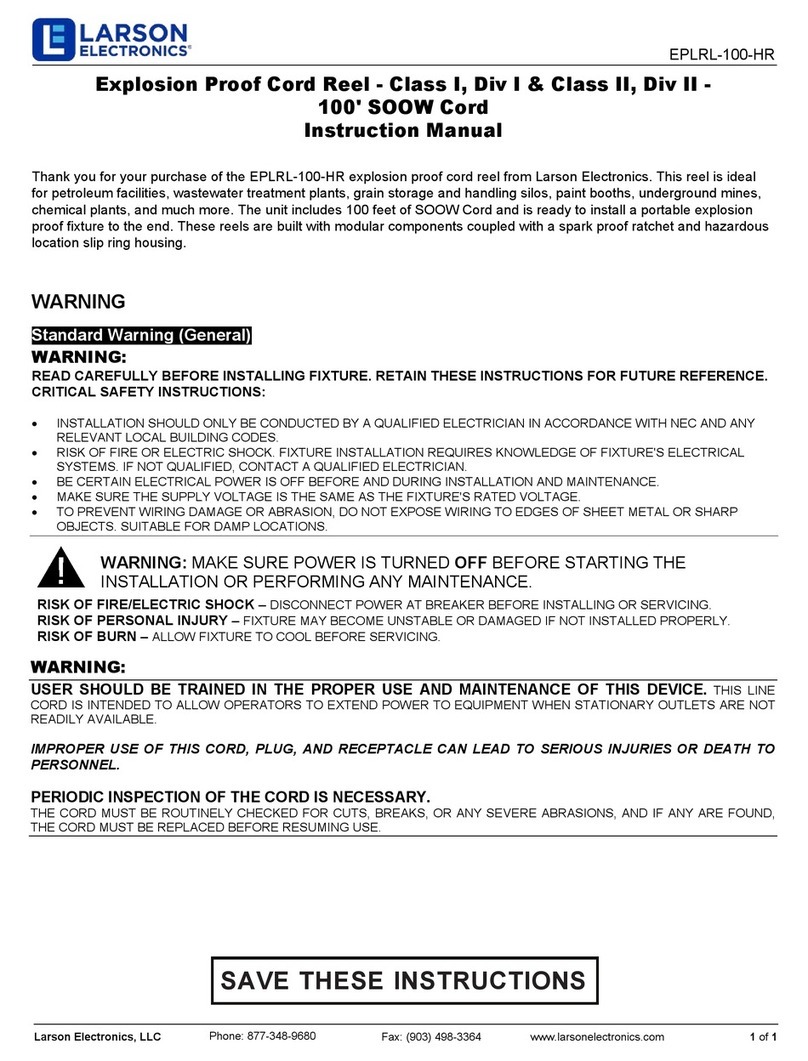
Larson Electronics
Larson Electronics EPLRL-100-HR User manual
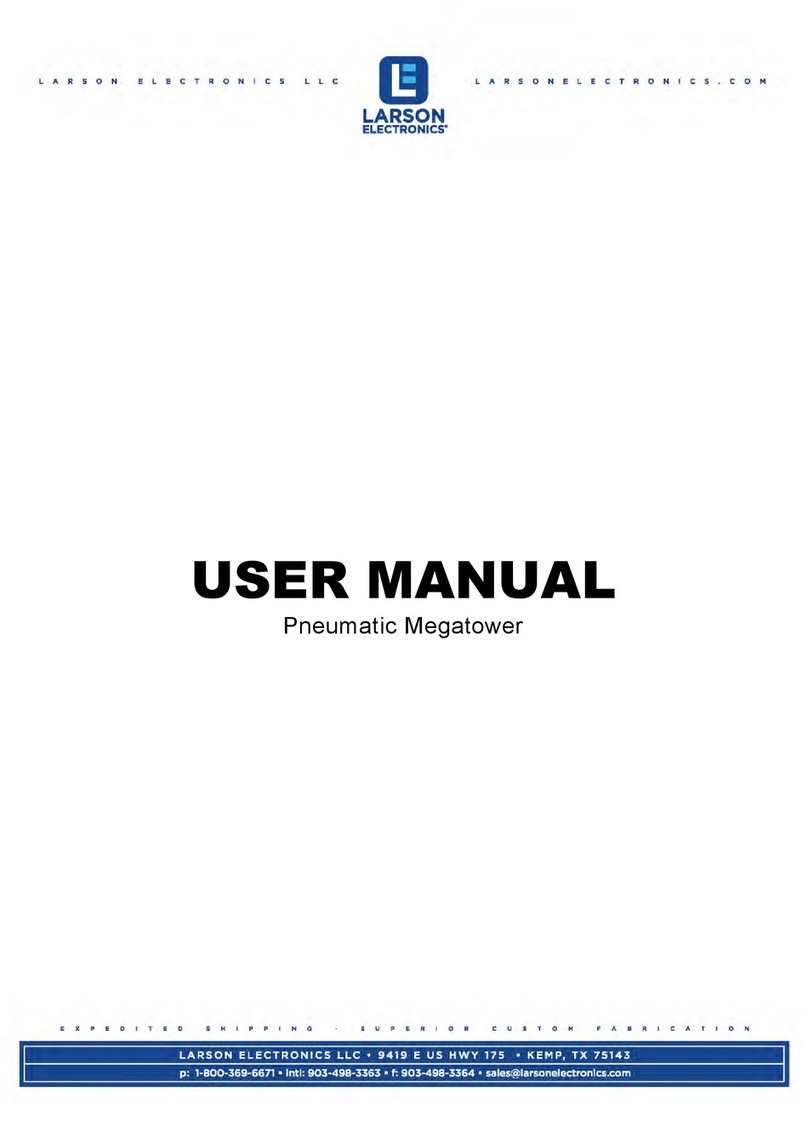
Larson Electronics
Larson Electronics Pneumatic Megatower User manual

Larson Electronics
Larson Electronics EXP-GFCI-20A User manual
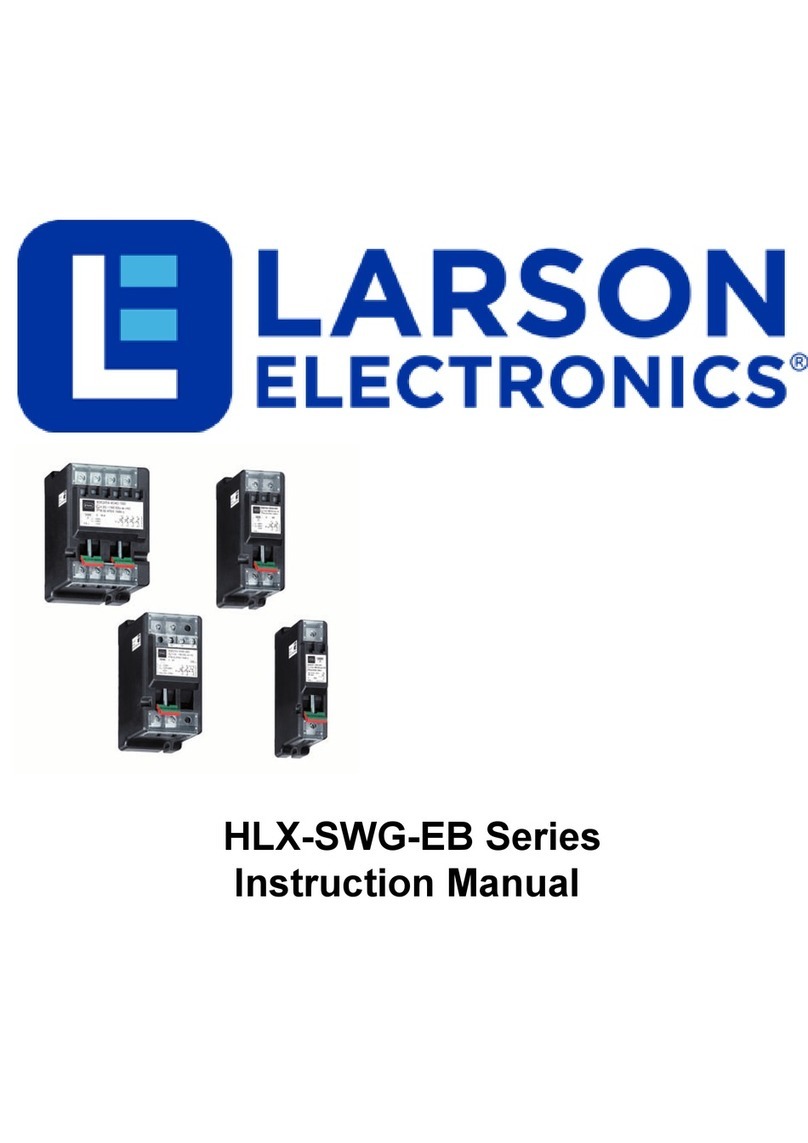
Larson Electronics
Larson Electronics HLX-SWG-EB Series User manual
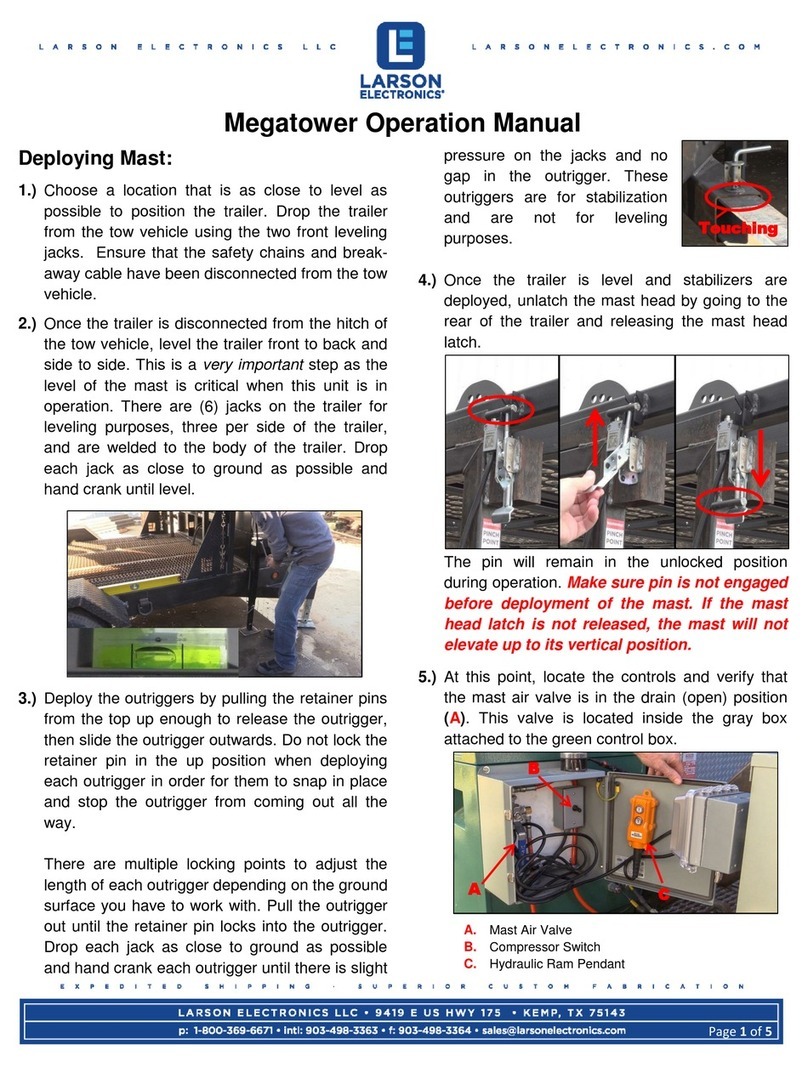
Larson Electronics
Larson Electronics Megatower RNT-WCDE-11-PLM50-6X500LTL-LED User manual
